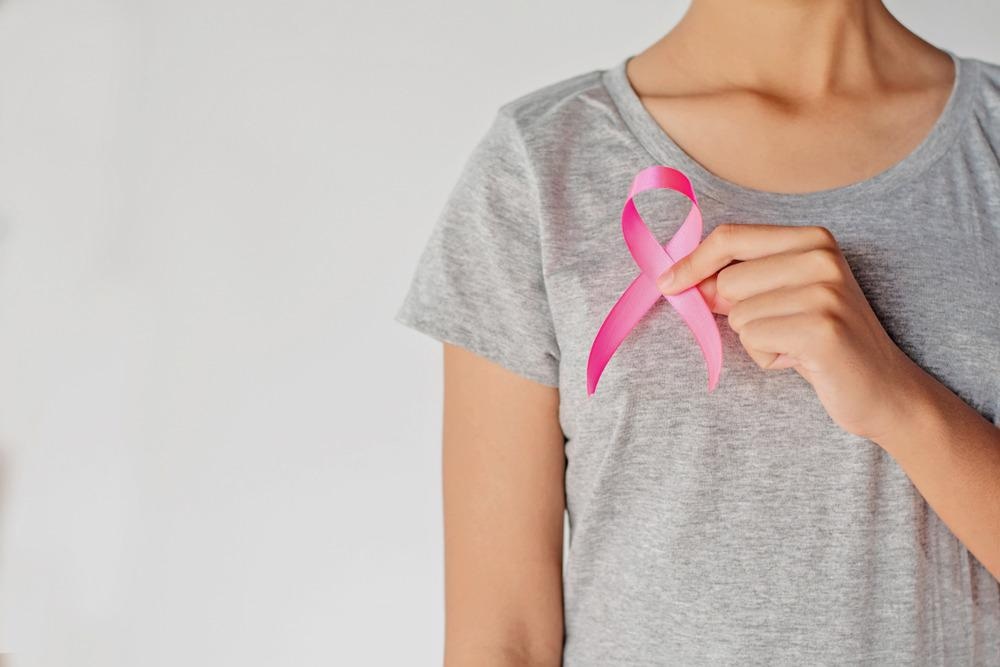A group of researchers has successfully developed laser-active nanographene colloids for gene treatment of a highly advanced form of cancer called triple-negative breast cancer (TNBC), according to a recent study published in the journal Materials Science and Engineering: C.

Study: Laser Activatable Nanographene Colloids for Chemo-Photothermal Combined Gene Therapy of Triple-Negative Breast Cancer. Image Credit: lovelyday12/Shutterstock.com
Breast cancer is the most common and lethal cancer in women globally. According to recent reports, breast cancer is treatable in around 75% of people with early-stage nonmetastatic tumors. However, treating advanced breast cancer, such as triple-negative breast cancer (TNBC), is far more challenging, with a clinical success rate of only 8% over the previous decade.
TNBC's low treatment rate is due to several critical factors, including a high tendency for tumor growth and a nonuniform genomic profile.
Limitations of Traditional Treatment Methods for TNBC
Chemotherapy is now regarded as the gold standard for treating TNBC, but its effectiveness is contingent on early identification of TNBC in patients.
Negative receptor-targeting medicines and hormones cannot be used exclusively to address triple-negative breast cancer. Combination chemotherapy, a standard treatment for breast cancer, is also associated with long-term detrimental consequences such as heart damage and secondary tumors.
Due to the negative activation of certain hormones or target receptors, focused treatments utilizing the durg trastuzumab cannot be employed identically for TNBC. Additionally, these medications have been linked to cell death, which may result in heart problems or other cardiovascular diseases, particularly in older cancer patients.
A short interfering RNA (siRNA) can be used instead of chemotherapy to regress the abnormal genes elevated in triple-negative breast cancer. However, effective siRNA distribution to malignant tissues is hampered by a reduced permeability caused by siRNA's anionic component. Endocytic disintegration is another cellular obstacle for siRNA usage, where siRNA becomes stuck within the endosomal membrane after intracellular absorption.
Therefore, a fit-for-purpose delivery mechanism for the distribution of cancer-targeted siRNAs should be developed in such a manner that it addresses the recognized challenges, such as quick removal of drugs from the circulatory system, protease breakdown, and poor drug absorption.
Importance of Nanoscale Graphene Oxide
Recently, nanographene oxide (GO) has shown promise as a transporter for medications and short nucleotide sequences due to its excellent biodegradability, microscopic diameter for efficient cancer targeting, good fatigue strength, and interface abundance of aromatic rings. However, graphene oxide must be reduced to restore its electrical structure once it has been oxidized. Although chemical solvents such as hydrazine monohydrate, ammonium, and boric acid have been extensively used to reduce graphene oxide, their cytotoxicity restricts their application in medicinal delivery systems.
Chitosan oligosaccharide (CO), a naturally present biodegradable copolymer, is commonly used to stabilize and reduce gold nanocrystals. It has also been used as a non-toxic alternate ingredient to reduce graphene oxide to nanographene colloids (nGC) in recent years. The reduction of GO by this approach is important because it improves the optical characteristics of graphene oxide, enabling it to be used as a photocatalytic drug in the treatment of TNBC.
Research Methodology
In this work, the researchers aimed to develop a nanographene colloid (nGC)-based delivery mechanism that effectively incorporates siRNA and efficiently localizes it into TNBC cells to achieve considerable anticancer efficacy. To minimize the number of washing cycles and create high-performance nanographene colloids, graphene oxide was generated from graphene sheet flakes using the improved Hummers technique. CO was then coupled to nGC to perform a variety of critical tasks, including decreasing and stabilizing nGC.
Multiple tests were conducted using triple-negative breast cancer cells, including cell counting kit-8 assays, apoptosis assays, cell growth allocation, cell absorption, and in vivo gene regulation effectiveness.
Key Findings
The nanographene colloids carried negatively charged gene therapies with remarkable efficiency. They successfully co-localized loaded materials into the TNBC cells, indicating significant antitumor activity, as determined by several characterization techniques. The findings demonstrate that the produced nanographene colloids are a suitable carrier for siRNA because they protect it from enzymatic breakdown, a necessary condition for siRNA distribution.
Notably, the produced nanographene colloids released the packed drugs in a temperature and pH-dependent manner after NIR-808 laser ablation. Synergic thermal and chemical gene therapies with near infrared-808 nm laser (NIR-808) treatment were shown to be more successful than those without NIR-808 laser ablation, implying a critical role for photothermal combined gene therapy for treating TNBC.
Continue reading: Diagnosing Ovarian Cancer with Carbon Nanotubes.
Reference
Maheshwari, R. et al. (2021). Laser activatable nanographene colloids for chemo-photothermal combined gene therapy of triple-negative breast cancer. Materials Science and Engineering: C. Available at: https://www.sciencedirect.com/science/article/abs/pii/S0928493121007451?casa_token=R8hOb6ZclAcAAAAA:JeYXWirPvtwmxiNs-pq5S2QLOQ3blW1x1pCwFyWI2MI43oaDGxGVQXqv4RWI5fnybkol0Ta9DA
Disclaimer: The views expressed here are those of the author expressed in their private capacity and do not necessarily represent the views of AZoM.com Limited T/A AZoNetwork the owner and operator of this website. This disclaimer forms part of the Terms and conditions of use of this website.